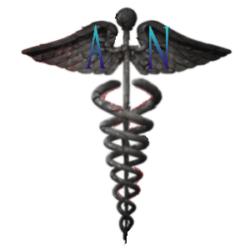What is Tracheotomy tube care?
Tracheotomy tube care involves the maintenance and cleanliness of a tracheostomy tube, which is a medical device inserted into the trachea (windpipe) to provide an airway for breathing. Tracheostomy tubes are commonly used in individuals who have undergone a tracheotomy procedure due to various medical conditions, such as respiratory failure or obstruction. Proper care is essential to prevent complications and ensure the effective functioning of the tracheostomy tube. Here are the general steps for tracheotomy tube care:
Daily Care:
- Hand Hygiene:
- Wash your hands thoroughly with soap and water before and after performing tracheostomy tube care.
- Gather Supplies:
- Collect necessary supplies, including sterile gloves, sterile saline solution, hydrogen peroxide (if recommended), sterile tracheostomy care kit, and a new tracheostomy tube (if changing).
- Patient Positioning:
- Position the patient comfortably, usually in a semi-Fowler’s position, to facilitate access to the tracheostomy site.
- Inspect the Skin:
- Inspect the skin around the tracheostomy site for signs of redness, swelling, irritation, or infection. Report any abnormalities to the healthcare provider.
- Cleaning:
- Clean around the tracheostomy site using sterile saline solution and sterile cotton-tipped applicators. If directed by the healthcare provider, hydrogen peroxide may be used.
- Suctioning (if needed):
- If there is excessive mucus or secretions, use a sterile suction catheter to clear the tracheostomy tube. Follow healthcare provider instructions for suctioning.
- Tube Movement:
- Gently rotate the tracheostomy tube to prevent it from adhering to the surrounding tissue. Be careful not to dislodge the tube.
- Changing the Inner Cannula (if applicable):
- If the tracheostomy tube has a removable inner cannula, follow healthcare provider guidelines for changing it. This is typically done to maintain cleanliness.
- Assessing Tube Placement:
- Ensure that the tracheostomy tube is securely in place, with no signs of accidental displacement.
- Securing the Tube:
- Reapply any securing ties or tapes to keep the tracheostomy tube in place.
Changing the Tracheostomy Tube (Scheduled or as Needed):
- Assessment:
- The healthcare provider assesses the need for tracheostomy tube change based on factors such as tube integrity, cleanliness, and any signs of complications.
- Preparation:
- Gather necessary supplies, including a new tracheostomy tube of the appropriate size, sterile gloves, sterile saline solution, and dressing materials.
- Hand Hygiene:
- Wash hands thoroughly or use hand sanitizer.
- Patient Preparation:
- Explain the procedure to the patient, and ensure they are comfortable.
- Tube Removal:
- The healthcare provider removes the existing tracheostomy tube carefully.
- Tube Insertion:
- The new tracheostomy tube is inserted into the tracheostomy site with care.
- Securing the Tube:
- Once the new tube is in place, secure it with ties or tapes to prevent accidental dislodgement.
- Dressing Application (if needed):
- Dressings may be applied around the tracheostomy site as directed by the healthcare provider.
- Post-Procedure Assessment:
- The healthcare provider assesses the patient for any signs of distress, breathing difficulties, or complications after the tube change.
- Documentation:
- Document the tracheostomy tube care procedure, including the date, time, any changes made, and the patient’s response.
It’s important to note that tracheotomy tube care should be performed by trained healthcare professionals or caregivers under the guidance of healthcare providers. Regular communication with the healthcare team is essential for ongoing management and care of individuals with tracheostomy tubes.

